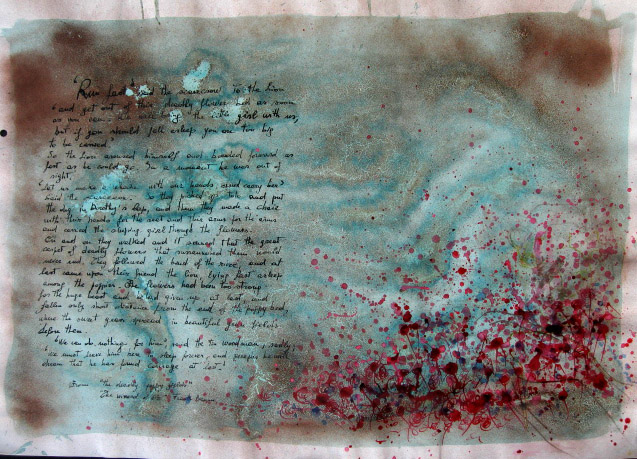Misteries and images
Barbara Agreste’s art unfolds like a fragile whisper from the edge of a dream — a place where broken tiles scatter light like shattered memories beneath drifting petals, and sharp, glinting shards catch glimpses of hidden fires. She weaves poisoned ivy with the ghostly figure of Ophelia, conjuring a doll whose quiet beauty is at once fragile and unsettling — an androgynous specter caught between worlds, lost within a twilight realm of tangled vines and cold, mist-laden swamps. This fragile universe pulses softly with melancholy and a delicate, ethereal pain, like a breath held beneath water, a secret waiting to dissolve.
Her films and video works are like dark fairy tales in motion — spaces where fallen petals scatter and shards of broken mirrors gleam along labyrinthine paths that curve back upon themselves in endless folds. Walls lean with subtle menace, trembling underfoot, while floors ripple in dizzying mosaics of color, alive with restless shadows and shimmering light. Eyes—hidden, watchful—peer from the darkness, silent sentinels in a world where nature is no gentle refuge but a twisted force: blood-stained leaves drift like forgotten dreams, and unnatural growths coil and twist in grotesque beauty. These landscapes are not safe havens but fragile labyrinths, constructed to confuse, to conceal, to lure the unwary deeper into mystery and unease.
In Agreste’s enchanted yet eerie realms, nothing remains fixed or certain. The boundaries between life and death, beauty and danger, reality and memory blur and dissolve, like reflections fractured by trembling water. The eye becomes a traitor here, deceived by shifting shadows and elusive forms. The doll—her delicate androgyny and silent presence—becomes both guide and prisoner, embodying the fragile tension between strength and vulnerability, concealment and revelation.
This is a world where beauty is never loud or ostentatious, but quiet, secretive, and enigmatic—a whispered elegy to pain and loss wrapped in delicate layers of nature’s uncanny embrace. It is a place of subtle sorrows and muted passions, where the melancholic dance of falling petals and creeping ivy hides deeper truths about fragility, transformation, and the hidden wounds beneath stillness.
Barbara Agreste’s art invites us to enter these shadowed gardens with care, to lose ourselves in the fragile interplay of light and darkness, presence and absence. Here, beauty is both a fragile refuge and a dangerous lure; the world is a dreamscape haunted by secrets, and the viewer becomes a wanderer on a path that never quite reveals its end.Barbara Agreste’s art drifts like a half-remembered nightmare, where fractured tiles glint beneath falling petals like broken promises, and sharp shards catch the flicker of unseen flames. She entwines poisoned ivy with the spectral figure of Ophelia, conjuring a doll whose quiet beauty is both fragile and eerie — a pale, androgynous wraith lost in a twilight realm of tangled vines and cold, whispering swamps. This is a fragile world where melancholy seeps like mist, and subtle pain hangs heavy in the air.
Her films unravel like dark fairy tales, scattering fallen petals and shards of broken mirrors along winding paths that fold back on themselves. Walls lean and shudder; floors tremble beneath unsteady mosaics of color that pulse like a restless heartbeat. Eyes—hidden, watching—glint from shadowed corners, while nature twists into a grotesque dance of bloodied leaves and unnatural growths. This is no sanctuary but a labyrinth of secrets and dangers, where every step risks a slip into the unknown.
In Barbara Agreste’s haunted dreamscape, the eye deceives and the heart falters. Beauty is a fragile echo, danger a constant breath. Here, in the shifting light between shadow and memory, the fragile and the fierce collide — and nothing is ever what it seems.
